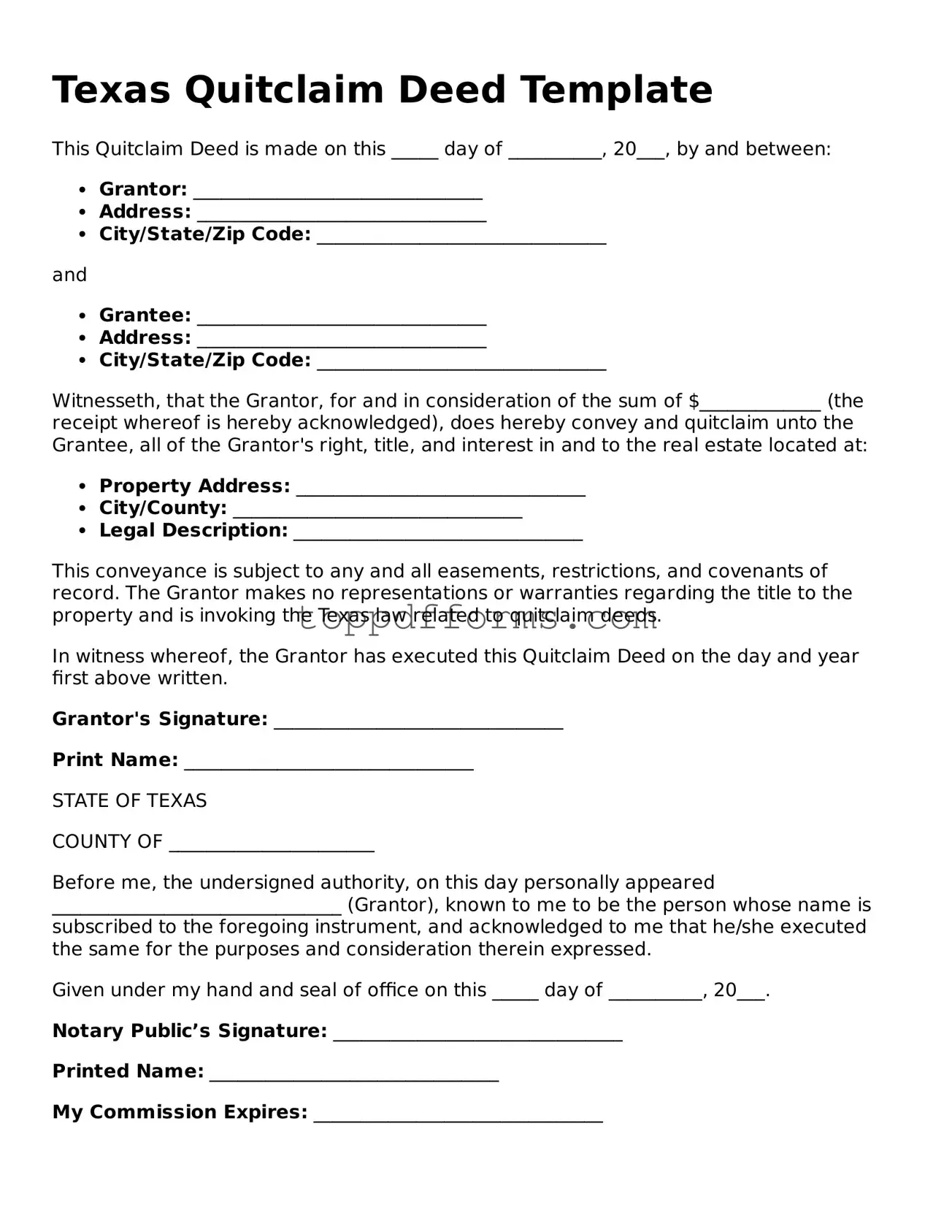What is a Texas Quitclaim Deed?
A Texas Quitclaim Deed is a legal document that transfers ownership of real estate from one party to another without guaranteeing the title's validity. The grantor (seller) relinquishes any claim to the property, but does not guarantee that they own it free and clear of liens or other encumbrances.
When should I use a Quitclaim Deed?
This type of deed is often used in situations where property is transferred between family members, such as during a divorce or inheritance. It is also useful for clearing up title issues or transferring property into a trust.
What information is required on a Texas Quitclaim Deed?
A Texas Quitclaim Deed must include the names of the grantor and grantee, a legal description of the property, the date of the transfer, and the signature of the grantor. Additionally, it may require notarization to be valid.
Do I need to file the Quitclaim Deed with the county?
Yes, after completing the Quitclaim Deed, it should be filed with the county clerk's office in the county where the property is located. This step is essential to make the transfer public and enforceable.
Is a Quitclaim Deed the same as a Warranty Deed?
No, a Quitclaim Deed offers no warranties or guarantees about the property title. In contrast, a Warranty Deed provides assurances that the grantor holds clear title to the property and has the right to sell it.
Can I revoke a Quitclaim Deed after it is filed?
Once a Quitclaim Deed is filed, it cannot be unilaterally revoked. However, the grantor can execute another deed to reverse the transfer, but this new deed must also be filed with the county clerk.
Are there any tax implications when using a Quitclaim Deed?
Transferring property via a Quitclaim Deed may have tax implications, such as gift taxes if the property is given without compensation. It is advisable to consult a tax professional to understand any potential tax consequences.
Can a Quitclaim Deed be used for commercial property?
Yes, a Quitclaim Deed can be used for both residential and commercial properties. The process and requirements remain the same, but it is essential to ensure that the deed is correctly executed and filed.
What happens if the Quitclaim Deed is not notarized?
If a Quitclaim Deed is not notarized, it may not be accepted for filing by the county clerk. Notarization helps verify the identities of the parties involved and ensures that the document is legally binding.
